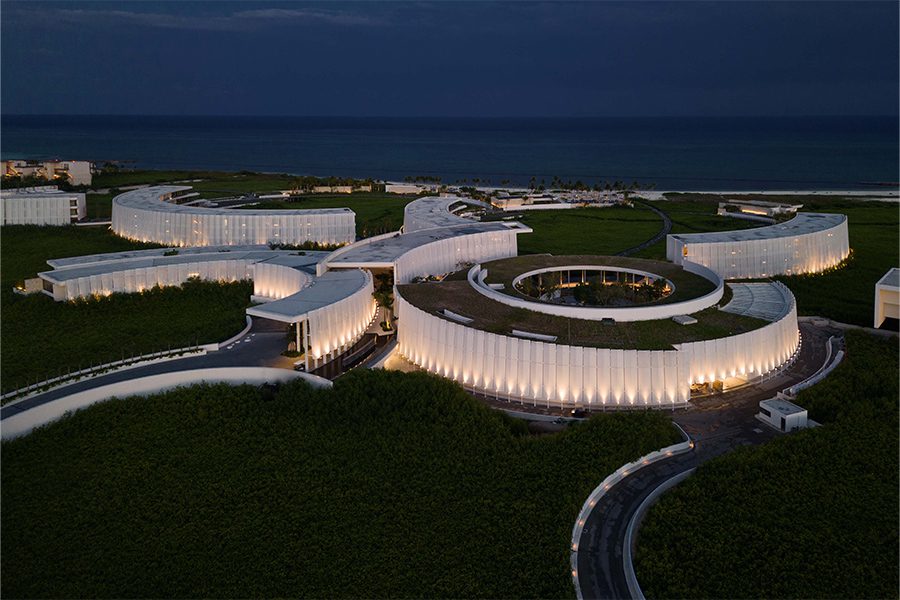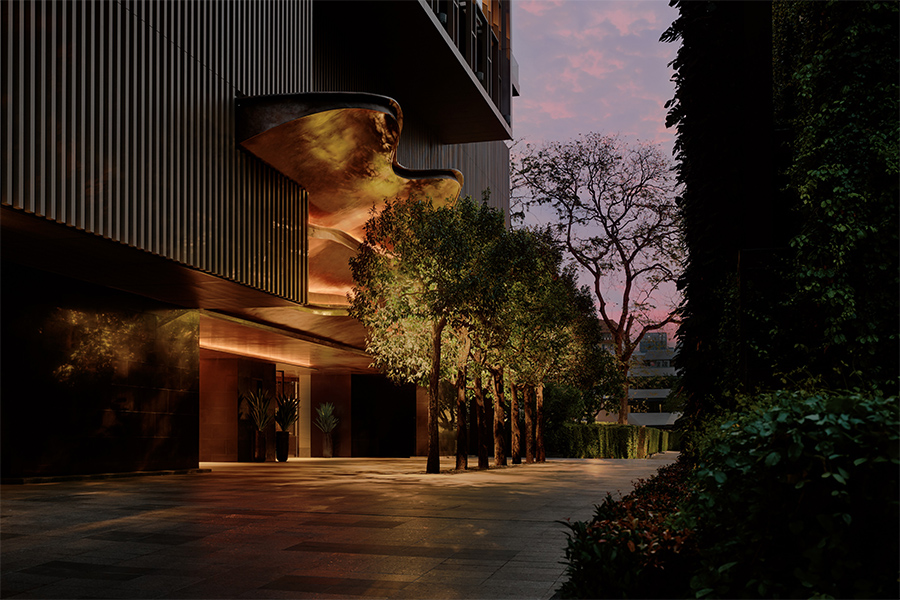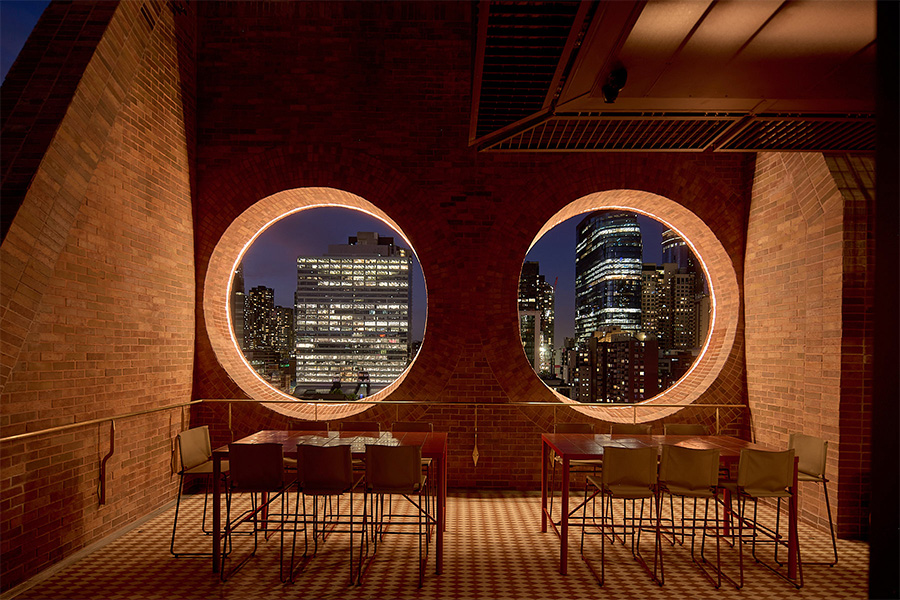Sparked by a shared vision between Toronto-based design studio Chapi Chapo Design and Mexico City-based architect Edmonds International, the St. Regis Kanai Resort, Riviera Maya celebrates the ancient spiritual beliefs of the Maya people in Mexico’s Yucatán Peninsula.
Located amidst the 620-acre Sian Ka’an nature reserve in a UNESCO World Heritage Site, the Grupo Alhel-owned resort was constructed with great care to protect its shoreline. “We wanted [guests] to reconnect and find their spiritual selves on vacation,” says Tatiana Sheveleva, cofounder and partner at Chapi Chapo Design. “This is the perfect [place] because they’re surrounded by this beautiful [landscape]. It feels cozy.”

The lobby’s dramatic staircase, made from a combination of wood and limestone, is complemented by plentiful plants and lanterns
Sheveleva led the studio’s research into Mayan traditions dating back thousands of years. The resulting design weaves subtle references to mysticism, hieroglyphics, timekeeping, and astronomy with colors informed by the blue ocean, lush greenery, natural stones, and brown mangrove roots. Further, biophilic features like skylights and living walls merge indoor and outdoor environments, while tranquil nooks were created for meditation and observation of sunsets and starry nights. “I design for guests to create their own stories,” Sheveleva says of the resort, which is home to 124 guestrooms and suites, F&B outlets including spaces for cacao and tea rituals, a spa, and event space.
Circular design motifs allude to the sun-shaped Mayan calendar comprising 13 moons lasting 28 days, adding up to 364 days. On the 365th day, called “The Day Where Time Does Not Exist,” the Maya celebrated—a theme the resort adopted for the guest experience. Round forms also reference cenotes, sinkhole caves that were Mayan water sources and sacrificial sites.
Furthering this idea, Edmonds International’s arc-shaped, sea-facing white buildings nod to the shape of the sun, plus their masterplan aligns with the constellation Pleiades—the Maya’s celestial birthplace, Kanai, or where the sky is born.

Designed as a hidden oasis, the spa is wrapped in a zigzag-patterned wooden screen, creating shadows as sunlight streams through the windows
In the guestrooms, bespoke swivel chairs feature circle motifs and bronze mirrors are angled to reflect the stars and natural light. Ceramic light pendants inspired by ceremonial garments made by Mayan women adorn the bedside, while walnut headboards are carved with zigzag or diamond fretwork. “That [pattern] is magically reflected on all the walls in the room,” she adds. Traditional walls were replaced by open-air corridors and metal fencing in the same pattern as the headboards, which creates mesmerizing shadows that travel across the property as the sun moves.
Designed for minimal environmental impact, the resort is suspended above the red mangrove forest with elevated walkways connecting different areas. These fragile mangroves were meticulously removed then reinstated once construction was completed. Sustainable measures also include energy-efficient lighting, eco-friendly fabrics, sustainable furniture, and low-flow plumbing for water conservation.
Indeed, when guests walk around the resort, “they see the perfect picture of the ocean and the mangroves,” Sheveleva says. “During the night, when the stars come out, it’s quite beautiful. The sunset is as well. It’s a timeless design.”
This article originally appeared in HD’s October 2023 issue.











